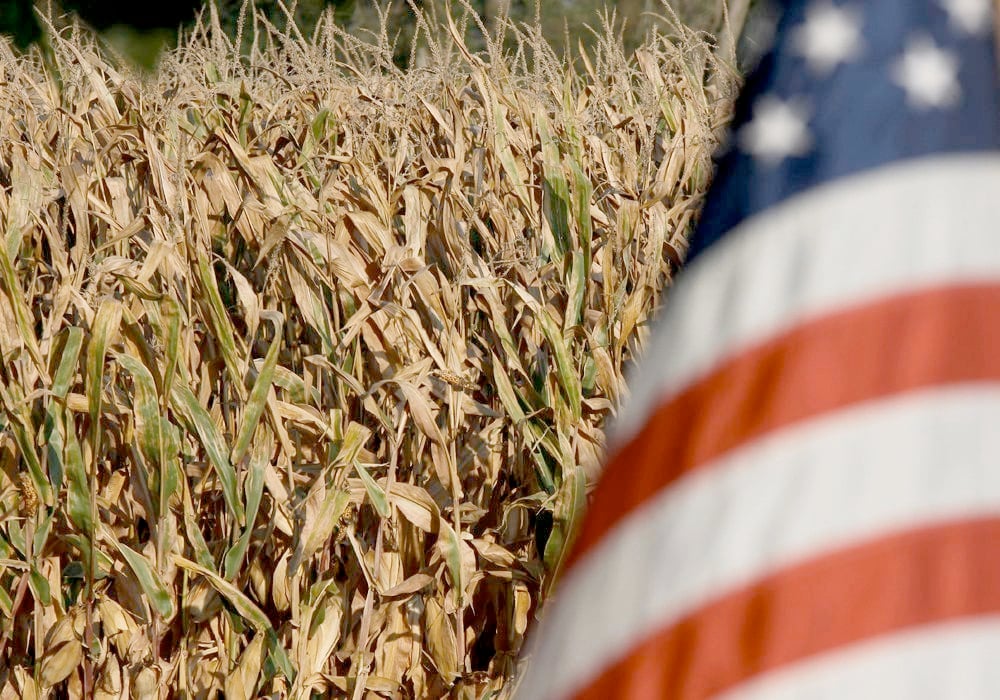U.S. expects big spring wheat crop

Canadian spring wheat growers can expect stiff competition from south of the border this year.
Scouts on the Wheat Quality Council’s 2024 Hard Spring and Durum Wheat Tour believe a bumper crop is on the way in the United States.
They are forecasting an average yield of 54.5 bushels per acre in North Dakota based on stops at 237 fields during a three-day tour that wrapped up July 25.
That is a 15 per cent increase over last year and the highest tour estimate since 1992.
However, it is slightly below the U.S. Department of Agriculture’s July 12 forecast of 56 bu. per acre, which would be a record for the state.
The tour’s average durum yield was pegged at 45.3 bu. per acre, a slight improvement from the 2023 projection of 43.9, according to a U.S. Wheat Associates blog.
“I don’t ever remember the crops being this uniformly good all over the state,” said Dave Green, the council’s executive vice-president.
The USDA’s National Agricultural Statistics Service said 74 per cent of the country’s spring wheat was rated good to excellent as of July 28, up from 42 per cent a year ago.
Jim Peterson, policy and marketing director for the North Dakota Wheat Commission, thinks 54.5 bu. per acre would be the high end for yields in his state.
“To reach that kind of potential, we’re going to need great fill weather,” he said.
Peterson noted that a portion of the crop was still flowering during the tour, so there was a lot of conjecture on how many kernels would fill per head.
He thinks the 54.5 bu. estimate will likely end up being too high due to disease pressure in the wet parts of the state and heat damage in the dry parts.
However, there is still plenty of optimism about the size of this year’s crop.
Many growers were concerned about protein levels three weeks ago. It was dry this spring, and input costs were high, so they fertilized with the expectation of achieving normal yields.
“The crop certainly outgrew that type of nitrogen,” he said.
However, the late-season heat and stress lowered yields and perhaps boosted protein content.
Peterson said the general perception is that spring wheat protein content will still end up below average, but better than had been feared.
The average protein content for the U.S. hard red winter wheat crop is 12.2 per cent, based on an analysis of 434 samples from Texas, Oklahoma, Kansas, Colorado and Nebraska.
That is down from last year’s average of 12.7 per cent but above the five-year average of 11.6 per cent.
“We are starting to get a little bit of a spread on the protein pricing, but certainly not significant,” he said.
U.S. producers were hoping for a bigger spring wheat price bounce due to Russia’s problems, quality issues in the European Union and Canada’s heat wave.
That caused them to hold onto their stocks of high-protein, old-crop spring wheat. However, that wheat is now starting to move into the system.
“That maybe helps cushion a little bit of protein shock if (the new crop) does come in lower than expected,” said Peterson.
Demand for high protein wheat seems “maybe a notch stronger” than it has been the past couple of years, he said.
The EU needs high protein wheat from either Canada or the United States to help offset the disappointing quality from its Baltic region.
“We’ve seen that right out of the gate, some better demand,” said Peterson.
Mexico has also been a “terrific” source of demand for U.S. spring wheat the past couple of years.
“They’re bringing in some Russian wheat, so they need something to kind of blend it up,” he said.
The strong international demand should temper “tepid” domestic demand for the crop.
Peterson said the next month is critical for determining where U.S. spring wheat prices are heading with some areas in need of rain, while other regions could use some heat.
Read also
Wheat in Southern Brazil Impacted by Dry Weather and Frosts
Oilseed Industry. Leaders and Strategies in the Times of a Great Change
Black Sea & Danube Region: Oilseed and Vegoil Markets Within Ongoing Transfor...
Serbia. The drought will cause extremely high losses for farmers this year
2023/24 Safrinha Corn in Brazil 91% Harvested
Write to us
Our manager will contact you soon



